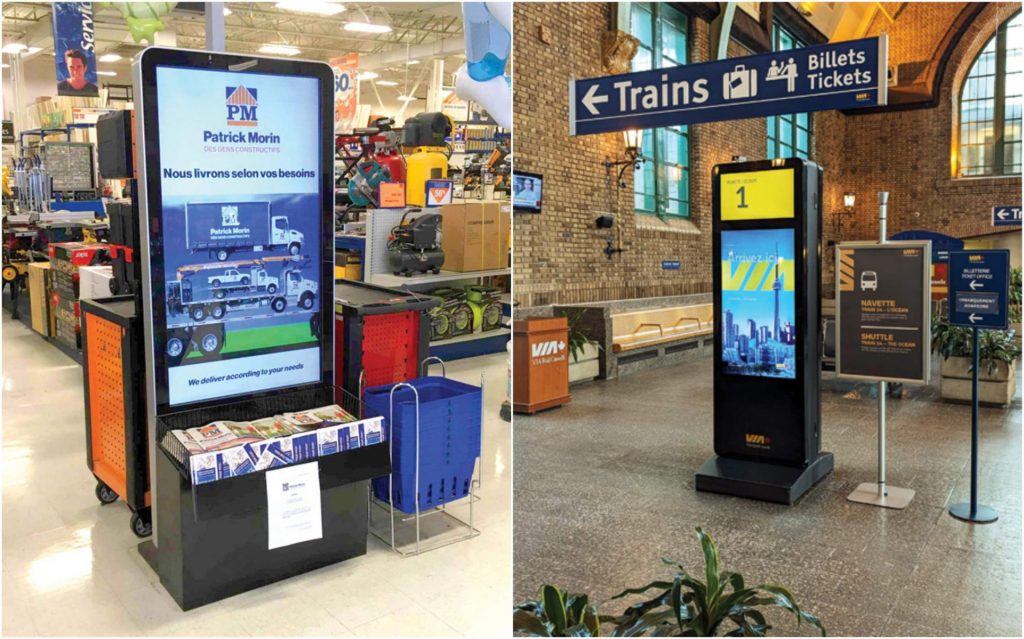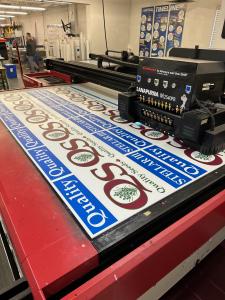How best can sign companies use AI?
Unlocking tools and strategies for today’s sign makers to stay ahead in a fast-evolving digital landscape.

The modest purpose of this article is to give a short update on recent artificial intelligence (AI) progress, focusing on providing practical advice to sign company managers on how to use some of these tools to improve their processes and products.
First, if you have not done so already, develop the habit of using large language model AI assistants such as ChatGPT or Galaxy AI. You can use conversation modes and see how natural and helpful these tools have become. By interacting often, your prompts will become more relevant, and you will be better able to assess the strengths and limitations of these tools. You will also see in what areas the information is valuable and relevant and in what cases it is not.
At least one member of your team should become an AI champion. For most companies, who that person should be is obvious, such as the IT technician or a technology-driven employee. Once you choose that person, their first mandate should be to understand the AI capabilities of some software tools your company currently uses, such as Microsoft Copilot, or the many modules available to graphic designers and engineers in standard software such as Adobe or SolidWorks. Those generally constitute low-lying fruits that can quickly bring tangible results and improve efficiency in your business. Your AI champion can then explore other tools that could be useful for your business, potentially with the help of some of the following ideas.

If you are a business manager struggling with long task lists, you should try AI-driven task management assistants such as Motion AI, which automatically access your calendars and insert tasks considering importance, deadlines, and other appointments, and reassign them if a task is not finished in time. It is Motion AI that found the time in my schedule and automatically placed the task of writing this article on my agenda!
AI can significantly enhance the operations, efficiency, and creativity of a company manufacturing signage. Here are a few ways AI can be integrated into the business. Let’s look at some of the practical tools that can be used. First, we will look at tools useful for static sign manufacturers and then for sign manufacturers incorporating digital signage.

Static sign manufacturers:
Static sign manufacturers should look into these AI-driven tools to improve their processes and product offerings:
- Design assistance: AI-powered tools can help create innovative, customized signage designs. AI-driven design software can inspire by generating multiple signage design concepts based on input criteria such as the preliminary concepts, the brand’s identity, the location of the sign, and the target audience. For example, it can quickly develop different colour schemes and layout ideas and consider factors like visibility from different distances and angles and local building regulations.
- Customer interaction: AI chatbots can be used on the company’s website to interact with customers, answer queries, provide quotes, and take orders 24/7 without human intervention.
- Quality control: For batch production projects, machine learning algorithms can be trained to inspect and detect defects in signage products during manufacturing, ensuring high quality and reducing waste.
- Customer relationship management (CRM): Most CRM software uses AI. If your team is disciplined in populating your CRM with customer and order information, AI-powered tools can help you manage your leads and maximize your sales.
Digital sign manufacturers:
AI can be particularly transformative for digital signage manufacturers and integrators, taking advantage of dynamic content and cloud connectivity:
- Content creation and management:
○ Automated content generation: AI tools like generative AI (for example, GPT, DALL·E) can create dynamic, engaging content for digital signage, such as text, images, and videos, tailored to specific audiences or locations.
○ Real-time content personalization: AI can analyze audience demographics (via cameras or sensors) and adjust content in real-time to match viewer preferences, increasing engagement.
○ Scheduling optimization: AI can optimize content scheduling based on factors like foot traffic, the time of day, or events, ensuring the right message is displayed at the right time.
- Predictive maintenance
○ Hardware monitoring: AI can monitor the health of digital signage hardware (e.g., screens, media players) and predict failures before they occur, reducing downtime and maintenance costs.

○ Remote diagnostics: AI-powered systems can diagnose issues remotely and provide solutions or automatically dispatch technicians when needed. For example, live camera feeds can be processed and failures detected automatically. Very soon, we will see closed-loop repairs, where an AI detects a problem with the screen and automatically repairs it remotely, especially for screens incorporating redundant electronics.
- Dynamic advertising
○ Programmatic advertising: AI can automate ad placements on digital signage networks, targeting specific audiences based on real-time data and maximizing ad revenue.
- Enhanced interactivity
○ Voice and gesture recognition: AI can enable interactive digital signage that responds to voice commands or gestures, creating immersive user experiences.
○ Chatbots and virtual assistants: AI-powered chatbots can be integrated into digital signage to provide information, answer questions, or guide customers in real-time. This has started in some applications, such as AI-driven, fully autonomous drive-thru kiosks, which are already being deployed in some quick-service restaurant (QSR) locations in the U.S. and other countries.

AI agents
As of April 2025, most people would agree that the next big thing will be AI agents, which are gradually finding their way into different products and applications.
An AI agent is a software program or system designed to perform tasks autonomously by perceiving its environment, making decisions, and taking actions to achieve specific goals. These agents leverage AI technologies, such as machine learning (ML), natural language processing (NLP), computer vision, and robotics, to operate intelligently and adaptively.
A good example of recent developments in AI agents is Lindies, an agent you can program fairly easily to act autonomously to manage simple administrative work. I have started using a Lindy AI agent assistant, my “morning Lindy,” which goes through my calendar, tasks, and emails and summarizes my day and tasks on my way to work in the morning. Like large language models such as ChatGPT, agents will become very useful, and we expect them to play a vital role in the near future.
AI can transform digital signage manufacturers and integrators, leveraging dynamic content and cloud connectivity.
Carl Breau is CEO of Nummax, and business mentor with NextAI since 2021, supporting Canadian AI startups.






